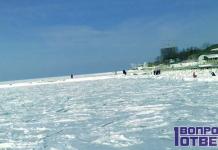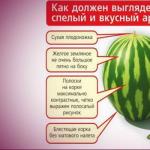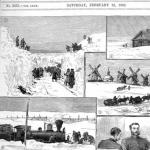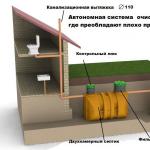Young naturalists are always haunted by seemingly simple questions. At what temperature does sea water usually freeze? Everyone knows that zero degrees is not enough to turn the sea surface into a good skating rink. But at what temperature does this happen?
What does sea water consist of?
How do the contents of the seas differ from fresh water? The difference is not so great, but still:
- Much more salt.
- Magnesium and sodium salts predominate.
- The density differs slightly, within a few percent.
- Hydrogen sulfide may form at depth.
The main component of sea water, no matter how predictable it may sound, is water. But unlike the water of rivers and lakes, it contains large amounts of sodium and magnesium chlorides.
Salinity is estimated at 3.5 ppm, but to make it more clear - at 3.5 thousandths of a percent of the total composition.
And even this, not the most impressive figure, provides the water with not only a specific taste, but also makes it unfit for drinking. There are no absolute contraindications, sea water is not poison or a toxic substance and nothing bad will happen from a couple of sips. It will be possible to talk about the consequences if a person at least throughout the day. Also, the composition of sea water includes:
- Fluorine.
- Bromine.
- Calcium.
- Potassium.
- Chlorine.
- Sulfates.
- Gold.
True, the percentage of all these elements is much less than salts.

Why can't you drink sea water?
We have already briefly touched on this topic, let's look at it in a little more detail. Together with sea water, two ions enter the body - magnesium and sodium.
|
Sodium |
Magnesium |
|
Participates in maintaining water-salt balance, one of the main ions along with potassium. |
The main effect is on the central nervous system. |
|
With increasing quantity Na In the blood, fluid leaves the cells. |
It is eliminated from the body very slowly. |
|
All biological and biochemical processes are disrupted. |
An excess in the body leads to diarrhea, aggravating dehydration. |
|
Human kidneys are not able to cope with so much salt in the body. |
The development of nervous disorders and inadequate condition is possible. |
It cannot be said that a person does not need all these substances, but needs always fit within a certain framework. After drinking a few liters of this water, you will go too far beyond their limits.
However, today an urgent need for drinking sea water may arise only among victims of shipwrecks.

What determines the salinity of sea water?
Seeing a slightly higher number 3.5 ppm , you might think that this is a constant for any seawater on our planet. But it’s not that simple; salinity depends on the region. It just so happens that the further north the region is located, the greater this value.
The south, on the contrary, can boast of not so salty seas and oceans. Of course, all rules have their exceptions. The salt levels in the seas are usually slightly lower than in the oceans.
What could be the reason for geographic division? It is unknown, researchers take it for granted, that’s all. Perhaps the answer should be sought in earlier periods of the development of our planet. Not at the time when life began - much earlier.
We already know that the salinity of water depends on the presence in it of:
- Magnesium chlorides.
- Sodium chlorides.
- Other salts.
It is possible that in some areas of the earth's crust the deposits of these substances were slightly larger than in neighboring regions. On the other hand, no one canceled the sea currents; sooner or later the general level had to level out.
So, most likely, the slight difference is due to the climatic characteristics of our planet. Not the most unfounded opinion, if you remember the frosts and take into account what exactly Water with a high salt content freezes more slowly.

Desalination of sea water.
Everyone has heard at least a little about desalination; some now even remember the film “Water World”. How realistic is it to install one such portable desalination machine in every home and forever forget about the problem of drinking water for humanity? Still fantasy, not actual reality.
It’s all about the energy expended, because for effective operation enormous power is required, no less than a nuclear reactor. A desalination plant in Kazakhstan operates on this principle. The idea was also presented in Crimea, but the power of the Sevastopol reactor was not enough for such volumes.
Half a century ago, before numerous nuclear disasters, it was still possible to assume that a peaceful atom would enter every home. There was even a slogan like that. But it is already clear that there is no use of nuclear micro-reactors:
- In household appliances.
- At industrial enterprises.
- In the designs of cars and airplanes.
- And generally within the city limits.
Not expected in the next century. Science can make another leap and surprise us, but for now these are all just the fantasies and hopes of careless romantics.

At what temperature can sea water freeze?
But the main question has not yet been answered. We have already learned that salt slows down the freezing of water, and the sea becomes covered with a crust of ice not at zero, but at sub-zero temperatures. But how far should thermometer readings go below zero so that residents of coastal areas do not hear the usual sound of the surf when leaving their homes?
To determine this value there is a special formula, complex and understandable only to specialists. It depends on the main indicator - salinity level. But since we have an average value for this indicator, can we also find the average freezing temperature? Yes, sure.
If you do not need to calculate everything down to the hundredth for a specific region, remember the temperature is -1.91 degrees.
It may seem that the difference is not that big, just two degrees. But during seasonal temperature fluctuations, this can play a huge role where the thermometer drops no lower than 0. If it were only 2 degrees cooler, the inhabitants of Africa or South America would be able to see ice off the coast, but alas. However, we don’t think that they are very upset by such a loss.

A few words about the world's oceans.
What about the oceans, fresh water reserves, and pollution levels? Let's try to find out:
- The oceans are still standing, nothing has happened to them. In recent decades, water levels have been rising. Perhaps this is a cyclical phenomenon, or perhaps the glaciers are actually melting.
- There is also more than enough fresh water; it is too early to panic about this. If another worldwide conflict occurs, this time with the use of nuclear weapons, maybe we will, like in “Mad Max,” pray for saving moisture.
- This last point is very popular among conservationists. And getting sponsorship is not so difficult; competitors will always pay for black PR, especially when it comes to oil producing companies. But they are the ones who cause the main damage to the waters of the seas and oceans. It is not always possible to control oil production and emergency situations, and the consequences are catastrophic every time.
But the world's oceans have one advantage over humanity. It is constantly updated, and its real self-cleaning capabilities are very difficult to assess. Most likely, he will be able to survive human civilization and see its decline in a completely acceptable state. Well, then the water will have billions of years to clear itself of all the “gifts”.
It’s even hard to imagine who needs to know at what temperature sea water freezes. A general educational fact, but who will really need it in practice is a question.
Video experiment: freezing sea water
The table shows the thermophysical properties of a solution of calcium chloride CaCl 2 depending on temperature and salt concentration: specific heat of the solution, thermal conductivity, viscosity of aqueous solutions, their thermal diffusivity and Prandtl number. The concentration of CaCl 2 salt in the solution is from 9.4 to 29.9%. The temperature at which the properties are given is determined by the salt content in the solution and ranges from -55 to 20°C.
Calcium chloride CaCl 2 may not freeze to a temperature of minus 55°C. To achieve this effect, the salt concentration in the solution must be 29.9%, and its density will be 1286 kg/m 3.
With increasing salt concentration in a solution, not only its density increases, but also such thermophysical properties as the dynamic and kinematic viscosity of aqueous solutions, as well as the Prandtl number. For example, dynamic viscosity of CaCl 2 solution with a salt concentration of 9.4% at a temperature of 20°C is equal to 0.001236 Pa s, and when the concentration of calcium chloride in the solution increases to 30%, its dynamic viscosity increases to a value of 0.003511 Pa s.
It should be noted that the viscosity of aqueous solutions of this salt is most strongly influenced by temperature. When a calcium chloride solution is cooled from 20 to -55°C, its dynamic viscosity can increase by 18 times, and its kinematic viscosity by 25 times.
The following are given thermophysical properties of CaCl 2 solution:
- , kg/m 3 ;
- freezing temperature °C;
- dynamic viscosity of aqueous solutions, Pa s;
- Prandtl number.
Density of calcium chloride solution CaCl 2 depending on temperature
The table shows the density values of calcium chloride solution CaCl 2 of various concentrations depending on temperature.
The concentration of calcium chloride CaCl 2 in solution is from 15 to 30% at a temperature from -30 to 15°C. The density of an aqueous solution of calcium chloride increases as the temperature of the solution decreases and the salt concentration in it increases.
Thermal conductivity of CaCl 2 solution depending on temperature
The table shows the thermal conductivity values of a solution of calcium chloride CaCl 2 of various concentrations at negative temperatures.
The concentration of CaCl 2 salt in solution is from 0.1 to 37.3% at a temperature from -20 to 0°C. As the concentration of salt in a solution increases, its thermal conductivity decreases.
Heat capacity of CaCl 2 solution at 0°C
The table shows the mass heat capacity of calcium chloride solution CaCl 2 of various concentrations at 0°C. The concentration of CaCl 2 salt in the solution is from 0.1 to 37.3%. It should be noted that with increasing salt concentration in the solution, its heat capacity decreases.
Freezing point of solutions of salts NaCl and CaCl 2
The table shows the freezing temperature of solutions of sodium chloride salts NaCl and calcium CaCl 2 depending on the salt concentration. The salt concentration in the solution is from 0.1 to 37.3%. The freezing point of a saline solution is determined by the salt concentration in solution and for sodium chloride, NaCl can reach a value of minus 21.2°C for a eutectic solution.
It should be noted that sodium chloride solution may not freeze to a temperature of minus 21.2°C, and a solution of calcium chloride does not freeze at temperatures up to minus 55°С.
Density of NaCl solution depending on temperature
The table shows the density values of sodium chloride NaCl solution of various concentrations depending on temperature.
The concentration of NaCl salt in the solution is from 10 to 25%. The density values of the solution are indicated at temperatures from -15 to 15°C.
Thermal conductivity of NaCl solution depending on temperature
The table shows the thermal conductivity values of a solution of sodium chloride NaCl of various concentrations at negative temperatures.
The concentration of NaCl salt in the solution is from 0.1 to 26.3% at a temperature from -15 to 0°C. The table shows that the thermal conductivity of an aqueous solution of sodium chloride decreases as the concentration of salt in the solution increases.
Specific heat capacity of NaCl solution at 0°C
The table shows the mass specific heat capacity of an aqueous solution of sodium chloride NaCl of various concentrations at 0°C. The concentration of NaCl salt in the solution is from 0.1 to 26.3%. The table shows that with increasing salt concentration in the solution, its heat capacity decreases.
Thermophysical properties of NaCl solution
The table shows the thermophysical properties of a solution of sodium chloride NaCl depending on temperature and salt concentration. The concentration of sodium chloride NaCl in solution is from 7 to 23.1%. It should be noted that when an aqueous solution of sodium chloride is cooled, its specific heat capacity changes slightly, thermal conductivity decreases, and the viscosity of the solution increases.
The following are given thermophysical properties of NaCl solution:
- solution density, kg/m3;
- freezing temperature °C;
- specific (mass) heat capacity, kJ/(kg deg);
- thermal conductivity coefficient, W/(m deg);
- dynamic viscosity of the solution, Pa s;
- kinematic viscosity of the solution, m 2 /s;
- thermal diffusivity coefficient, m 2 /s;
- Prandtl number.
Density of solutions of sodium chloride NaCl and calcium CaCl 2 depending on concentration at 15°C
The table shows the density values of solutions of sodium chloride NaCl and calcium CaCl 2 depending on the concentration. The concentration of NaCl salt in the solution is from 0.1 to 26.3% at a solution temperature of 15°C. The concentration of calcium chloride CaCl 2 in the solution ranges from 0.1 to 37.3% at a temperature of 15°C. The density of sodium and calcium chloride solutions increases with increasing salt content.
Volume expansion coefficient of solutions of sodium chloride NaCl and calcium CaCl 2
The table gives the values of the average coefficient of volumetric expansion of aqueous solutions of sodium chloride NaCl and calcium CaCl 2 depending on concentration and temperature.
The coefficient of volumetric expansion of a NaCl salt solution is indicated at a temperature from -20 to 20°C.
The coefficient of volumetric expansion of a CaCl 2 chloride solution is presented at temperatures from -30 to 20°C.
Sources:
- Danilova G.N. et al. Collection of problems on heat transfer processes in the food and refrigeration industry. M.: Food industry, 1976. - 240 p.
3.2. SEA ICE
All our seas, with rare exceptions, are covered with ice of varying thickness in winter. In this regard, navigation in one part of the sea becomes difficult during the cold half of the year, while in another it stops and can only be carried out with the help of icebreakers. Thus, freezing of the seas disrupts the normal operation of the fleet and ports. Therefore, for more qualified operation of the fleet, ports and offshore structures, certain knowledge of the physical properties of sea ice is required.Sea water, unlike fresh water, does not have a specific freezing point. The temperature at which ice crystals (ice needles) begin to form depends on the salinity of seawater S. It has been experimentally established that the freezing temperature of sea water can be determined (calculated) using the formula: t 3 = -0.0545S. At a salinity of 24.7%, the freezing point is equal to the temperature of the highest density of sea water (-1.33°C). This circumstance (property of sea water) made it possible to divide sea water into two groups according to the degree of salinity. Water with a salinity of less than 24.7% is called brackish and, when cooled, first reaches the temperature of the highest density and then freezes, i.e. behaves like fresh water, which has a temperature of highest density of 4° C. Water with a salinity of more than 24.7°/00 is called sea water.
The temperature at greatest density is below the freezing point. This leads to the occurrence of convective mixing, which delays the freezing of sea water. Freezing is also slowed down due to salinization of the surface layer of water, which is observed when ice appears, since when water freezes, only part of the salts dissolved in it remains in the ice, while a significant part of them remains in the water, increasing its salinity, and therefore, and the density of the surface layer of water, thereby lowering the freezing point. On average, the salinity of sea ice is four times less than the salinity of water.
How does ice form in sea water with a salinity of 35°/00 and a freezing point of -1.91° C? After the surface layer of water has cooled to the temperature indicated above, its density will increase and the water will sink down, and warmer water from the underlying layer will rise up. Mixing will continue until the temperature of the entire mass of water in the upper active layer drops to -1.91 ° C. Then, after some supercooling of the water below the freezing point, ice crystals (ice needles) begin to appear on the surface.
Ice needles form not only on the surface of the sea, but throughout the entire thickness of the mixed layer. Gradually, the ice needles freeze together, forming ice spots on the surface of the sea that resemble frozen water in appearance. salo. In color it is not much different from water.
When snow falls on the surface of the sea, the process of ice formation accelerates, since the surface layer is desalinated and cooled, in addition, ready-made crystallization nuclei (snowflakes) are introduced into the water. If the water temperature is below 0°C, then the snow does not melt, but forms a viscous mushy mass called snowy. Under the influence of wind and waves, lard and snow are knocked down into white pieces called sludge. With further compaction and freezing of the initial types of ice (ice needles, fat, slush, snow slush) a thin, elastic crust of ice is formed on the sea surface, easily bending in the wave and, when compressed, forming jagged layers called Nilas. Nilas has a matte surface and a thickness of up to 10 cm, and is divided into dark (up to 5 cm) and light (5-10 cm) nilas.
If the surface layer of the sea is highly desalinated, then with further cooling of the water and a calm state of the sea, as a result of direct freezing or from ice fat, the surface of the sea is covered with a thin shiny crust called bottle. The bottle is transparent, like glass, easily broken by wind or waves, its thickness is up to 5 cm.
On a light wave of ice fat, slush or snow, as well as as a result of the breaking of the bottle and nilas during a large swell, the so-called pancake ice. It has a predominantly round shape, ranging from 30 cm to 3 m in diameter and up to approximately 10 cm in thickness, with raised edges due to the impact of ice floes against one another.
In most cases, ice formation begins near the coast with the appearance of banks (their width is 100-200 m from the coast), which, gradually spreading into the sea, turn into fast ice Strands and fast ice refer to fixed ice, that is, ice that forms and remains stationary along the coast, where it is attached to a shore, an ice wall, or an ice barrier.
The upper surface of young ice is in most cases smooth or slightly wavy, the lower, on the contrary, is very uneven and in some cases (in the absence of currents) looks like a brush of ice crystals. During the winter, the thickness of the young ice gradually increases, its surface is covered with snow, and the color due to the flow of brine from it changes from gray to white. Young ice 10-15 cm thick is called gray, and 15-30 cm thick - gray-white. With further increase in ice thickness, the ice becomes white. Sea ice that has lasted one winter and has a thickness of 30 cm to 2 m is usually called white. first-year ice, which is divided into thin(thickness from 30 to 70 cm), average(from 70 to 120 cm) and thick(more than 120 cm).
In areas of the World Ocean where the ice does not have time to melt over the summer and from the beginning of the next winter begins to grow again and by the end of the second winter its thickness increases and is already more than 2 m, it is called two-year-old ice. Ice that has existed for more than two years called perennial, its thickness is more than 3 m. It has a greenish-blue color, and with a large admixture of snow and air bubbles, it has a whitish color, glassy appearance. Over time, desalinated and compressed multi-year ice acquires a blue color. Based on their mobility, sea ice is divided into stationary ice (fast ice) and drifting ice.
Drifting ice is divided into: pancake ice, ice fields, crushed ice(a piece of sea ice less than 20 m across), grated ice(broken ice less than 2 m in diameter), not like that(a large hummock or a group of hummocks frozen together, up to 5 m high above sea level), frosty(pieces of ice frozen into an ice field), ice porridge(an accumulation of drifting ice consisting of fragments of other forms of ice no more than 2 m in diameter). In turn, ice fields, depending on their horizontal dimensions, are divided into:
Giant ice fields, more than 10 km across;
Extensive ice fields, from 2 to 10 km across;
Large ice fields, from 500 to 2000 m across;
Fragments of ice fields, from 100 to 500 m in diameter;
Coarse ice, from 20 to 100 m in diameter.
A very important characteristic for shipping is the concentration of drifting ice. Concentration is understood as the ratio of the area of the sea surface actually covered with ice to the total area of the sea surface on which drifting ice is located, expressed in tenths.
In the USSR, a 10-point ice concentration scale was adopted (1 point corresponds to 10% of the ice-covered area), in some foreign countries (Canada, USA) it is 8-point.
In terms of its concentration, drifting ice is characterized as follows:
1. Compressed drifting ice. Drifting ice with a concentration of 10/10 (8/8) and no water visible.
2. Frozen solid ice. Drifting ice with a concentration of 10/10 (8/8) and ice floes frozen together.
3. Very compact ice. Drifting ice, the concentration of which is greater than 9/10, but less than 10/10 (from 7/8 to 8/8).
4. Solid ice. Drifting ice, with a concentration of 7/10 to 8/10 (6/8 to 7/8), consisting of ice floes, most of which are in contact with each other.
5. Thin ice. Drifting ice, the concentration of which ranges from 4/10 to 6/10 (from 3/8 to 6/8), with a large number of breaks; ice floes usually do not touch one another.
6. Rare ice. Drifting ice in which the concentration is 1/10 to 3/10 (1/8 to 3/8) and an expanse of clear water dominates the ice.
7. Individual ice floes. A large area of water containing sea ice with a concentration of less than 1/10 (1/8). In the complete absence of ice, this area should be called pure water.
Drifting ice is in constant motion under the influence of wind and currents. Any change in wind over an area covered with drifting ice causes changes in the distribution of ice: the stronger and longer the wind action, the greater the change.
Long-term observations of the wind drift of compacted ice have shown that ice drift is directly dependent on the wind that caused it, namely: the direction of ice drift deviates from the wind direction by approximately 30° to the right in the northern hemisphere, and to the left in the southern hemisphere, the drift speed is related with a wind speed of a wind coefficient of approximately 0.02 (r = 0.02).
In table Figure 5 shows the calculated values of ice drift speed depending on wind speed.
Table 5
The drift of individual ice floes (small icebergs, their fragments and small ice fields) differs from the drift of consolidated ice. Its speed is greater, since the wind coefficient increases from 0.03 to 0.10.The speed of movement of icebergs (in the North Atlantic) with fresh winds ranges from 0.1 to 0.7 knots. As for the angle of deviation of their movement from the direction of the wind, it is 30-40°.
The practice of ice navigation has shown that independent navigation of an ordinary sea vessel is possible when the concentration of drifting ice is 5-6 points. For large-tonnage ships with a weak hull and for old ships, the cohesion limit is 5 points, for medium-tonnage ships in good condition - 6 points. For ice-class ships this limit can be increased to 7 points, and for icebreaking transport ships - to 8-9 points. The indicated limits for the permeability of drifting ice are derived from practice for medium-heavy ice. When sailing in heavy multi-year ice, these limits should be reduced by 1-2 points. With good visibility, navigation in ice concentrations up to 3 points is possible for ships of any class.
If you need to navigate through a sea area covered with drifting ice, you must keep in mind that it is easier and safer to enter the edge of the ice against the wind. Entering ice with a tailwind or crosswind is dangerous, as conditions are created to pile up on the ice, which can lead to damage to the side of the ship or its bilge part.
Forward
Table of contents
Back
If you noticed, water in the sea freezes at temperatures well below zero degrees. Why is this happening? It all depends on the concentration of salt in it. The higher it is, the lower the freezing temperature. On average, an increase in water salinity by two ppm lowers its freezing point by one tenth of a degree. So judge for yourself what the ambient temperature should be for a thin layer of ice to form on the surface of the sea, with a water salinity of 35 ppm. At a minimum, it should be two degrees below zero.
The same Azov Sea, with a water salinity of 12 ppm, freezes at a temperature of minus 0.6 degrees. At the same time, the adjacent Sivash remains unfrozen. The thing is that the salinity of its water is 100 ppm, which means that for ice to form here, at least six degrees of frost is necessary. In order for the surface of the White Sea, where the water salinity level reaches 25 ppm, to cover with ice, the temperature must drop to minus 1.4 degrees.
The most amazing thing is that in sea water cooled to minus one degree, snow does not melt. He just continues to swim in it until he turns into a piece of ice. But when it gets into cooled fresh water, it immediately melts.
The process of freezing sea water has its own characteristics. First, primary ice crystals begin to form, which incredibly look like thin transparent needles. There is no salt in them. It is squeezed out of the crystals and remains in the water. If we collect such needles and melt them in some kind of container, we will get fresh water.
A mess of ice needles, looking like a huge greasy spot, floats on the surface of the sea. Hence its original name - lard. With a further decrease in temperature, the lard freezes, forming a smooth and transparent ice crust, which is called nilas. Unlike lard, nilas contains salt. It appears in it in the process of fat freezing and needles capturing droplets of sea water. This is a rather chaotic process. This is why salt in sea ice is distributed unevenly, usually in the form of individual inclusions.
Scientists have found that the amount of salt in sea ice depends on the ambient temperature at the time of its formation. When there is slight frost, the rate of formation of nilas is low, the needles capture little sea water, hence the salinity of the ice is low. In severe frost, the situation is exactly the opposite.
When sea ice melts, the first thing that comes out is salt. As a result, it gradually becomes fresh.
Sea water, unlike fresh water, does not have a specific freezing point, but it is always below 0°C. The freezing point of sea water depends on its salinity: the higher the salinity, the lower the freezing point. Thus, at an average ocean salinity of 35%, water freezes at -1.9°C, and at a salinity of 40%, at -2.2°C. In the Black Sea, for example, where salinity is from 15 to 20%, ice appears when the water cools from -0.8 to -1.1 ° C.
When seawater cools to the freezing point corresponding to its salinity, ice crystals begin to form (freezing). When freezing, the salts contained in seawater are not included in the crystals of the resulting ice, since the freezing point of the saline solution is much lower (for example, the freezing temperature of steamed salt is -21°C). Therefore, most of the salts fall into the non-freezing subglacial water, and a certain amount freezes into the ice in the form of small drops of a strong salt solution, which significantly affects the physicochemical and mechanical properties of sea ice. The lower the temperature at which water freezes, the more brine droplets remain in the sea ice and, therefore, the greater its salinity. Salts that fall into the surface layer during the freezing process of sea water increase its salinity, which lowers the freezing point.
The temperature of the highest relative density and the freezing point of sea water decrease with increasing salinity. At a salinity of 24.7%, both temperatures become the same: -1.33°C. Waters whose salinity is less than 24.7% are called brackish; their temperature of greatest density is above the freezing point. Therefore, the process of freezing of water with a salinity of less than 24.7% occurs in the same way as fresh water: first, the water reaches the temperature of the highest density at a given salinity, then the freezing point.
In water with a salinity of more than 24.7%, the temperature of the highest density is always below the freezing point, therefore, until the moment of freezing, the density of sea water increases with decreasing temperature, and the upper cooled layers of water (as heavier ones) sink down; Less dense and warmer waters rise to the surface, making ice formation more difficult. In this regard, in the seas and oceans, the water freezes only after long autumn colds, when the entire water column, covered by vertical circulation (convection), is cooled to the freezing temperature.
Fresh water has its greatest density at +4°C and begins to freeze at 0°C. In a freshwater pool, after cooling the water to +4°C, further cooling of its surface layer occurs very quickly. The water here becomes lighter than the underlying waters, which eliminates mixing and, therefore, the rise to the surface of warmer water masses from the depths. Ice formed from fresh water is a homogeneous mass of ice crystals interspersed with air bubbles and various solid particles that were in the water.
If you noticed, water in the sea freezes at temperatures well below zero degrees. Why is this happening? It all depends on the concentration of salt in it. The higher it is, the lower the freezing temperature. On average, an increase in water salinity by two ppm lowers its freezing point by one tenth of a degree. So judge for yourself what the ambient temperature should be for a thin layer of ice to form on the surface of the sea, with a water salinity of 35 ppm. At a minimum, it should be two degrees below zero.
The same Azov Sea, with a water salinity of 12 ppm, freezes at a temperature of minus 0.6 degrees. At the same time, the adjacent Sivash remains unfrozen. The thing is that the salinity of its water is 100 ppm, which means that for ice to form here, at least six degrees of frost is necessary. In order for the surface of the White Sea, where the water salinity level reaches 25 ppm, to cover with ice, the temperature must drop to minus 1.4 degrees.
The most amazing thing is that in sea water cooled to minus one degree, snow does not melt. He just continues to swim in it until he turns into a piece of ice. But when it gets into cooled fresh water, it immediately melts.
The process of freezing sea water has its own characteristics. First, primary ice crystals begin to form, which incredibly look like thin transparent needles. There is no salt in them. It is squeezed out of the crystals and remains in the water. If we collect such needles and melt them in some kind of container, we will get fresh water.
A mess of ice needles, looking like a huge greasy spot, floats on the surface of the sea. Hence its original name - lard. With a further decrease in temperature, the lard freezes, forming a smooth and transparent ice crust, which is called nilas. Unlike lard, nilas contains salt. It appears in it in the process of fat freezing and needles capturing droplets of sea water. This is a rather chaotic process. This is why salt in sea ice is distributed unevenly, usually in the form of individual inclusions.
Scientists have found that the amount of salt in sea ice depends on the ambient temperature at the time of its formation. When there is slight frost, the rate of formation of nilas is low, the needles capture little sea water, hence the salinity of the ice is low. In severe frost, the situation is exactly the opposite.
When sea ice melts, the first thing that comes out is salt. As a result, it gradually becomes fresh.


















